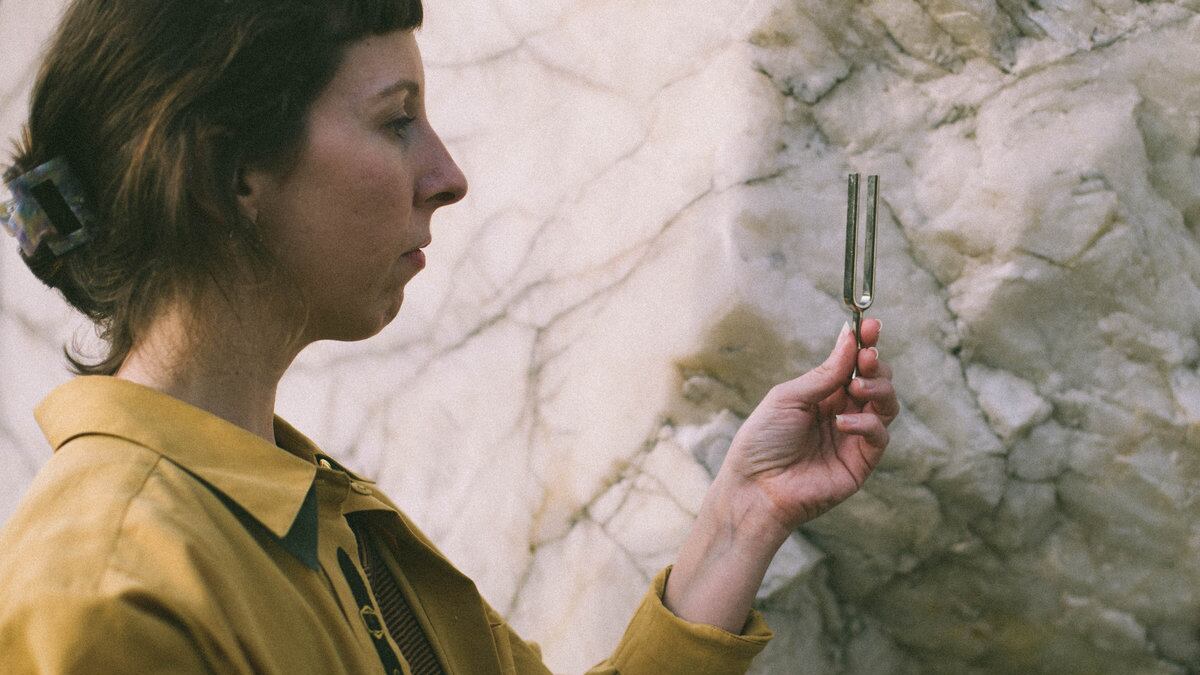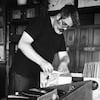At the start of her performance this past Sunday, Alexandra Spence introduced the audience to a sound. In her hand was a piece of a smoking pipe from the 18th century that a friend discovered on the banks of the River Thames in London. Spence had fitted the curio with a waterproof microphone because, she explained, it made an amazing sound when submerged in liquid. When she finally plopped it in a glass of water, the pipe emitted a light groan akin to a wooden door being slowly opened or the creak of a worrisome knee joint being carefully bent.
So began a 40-minute thesis on the constant collisions of the natural and artificial, the analog and digital. She fed the pipe sound through her laptop, manipulated it all out of proportion, and used it as the foundation for a mini symphony. Joining the mix were field recordings of insects and birdsong, the hum of struck tuning forks, harp strings played with a violin bow, and various handheld gewgaws. Spence captured these noises in her computer, molding them like kinetic sand into an ever-changing display of sonic shapes and structures.
Tucked into the warm confines of Leaven’s sanctuary with only light coming from the two lamps on either side of Spence’s table, the set became cocooning. The sound swarmed around the room in comforting, buzzing waves. Were it not for the small whorls of feedback and being surrounded by strangers, I might have drifted off to sleep. From the body language of the audience seated elsewhere in the room, sitting in the surprisingly comfortable pews or on pillows placed close to Spence, there were some attendees that lost the battle and gave themselves over to a quick sound bath-induced nap. I’m sure their dreams were absolutely beautiful.

